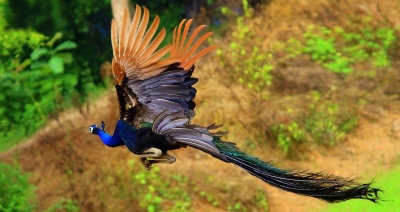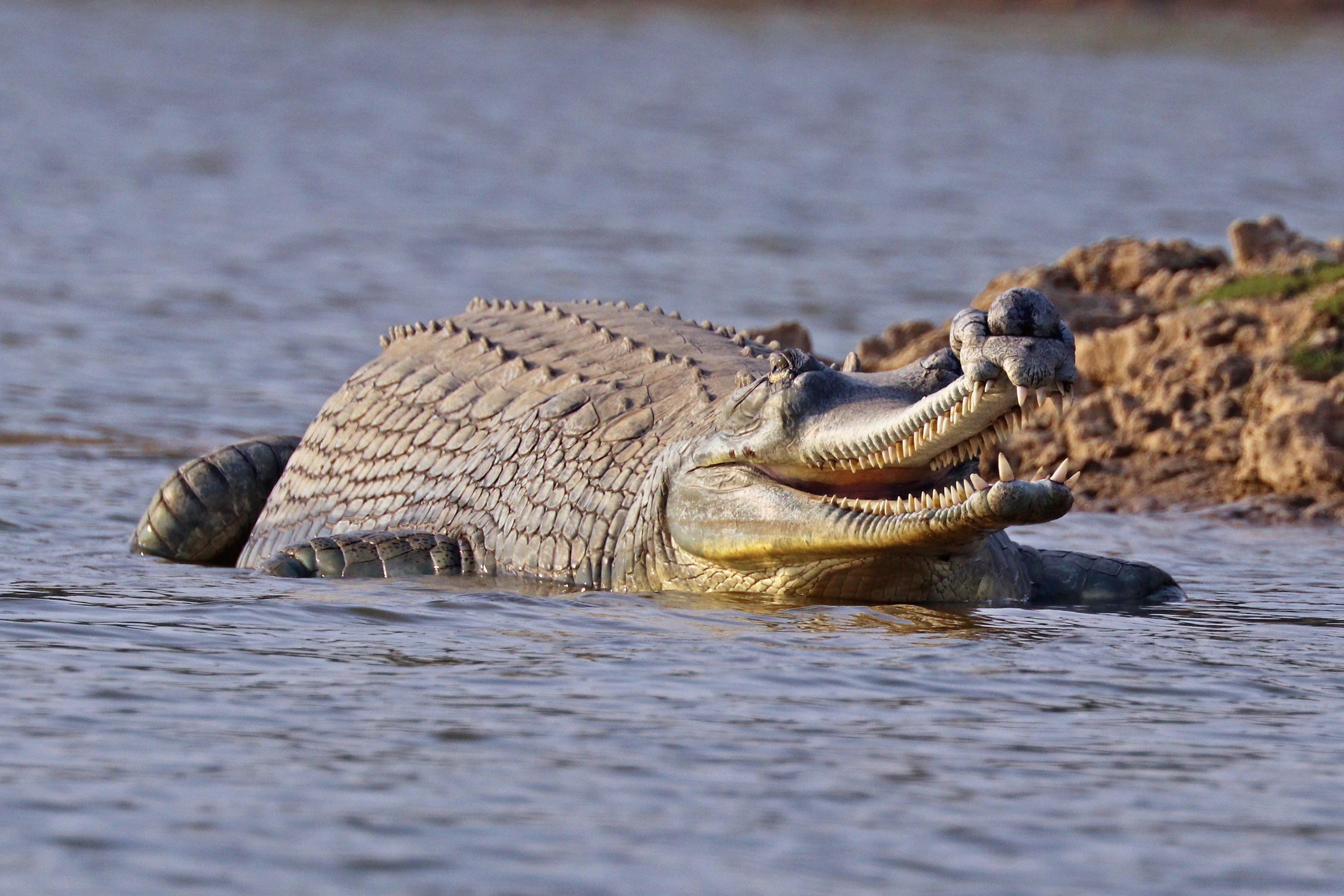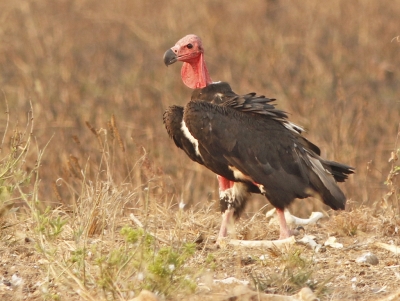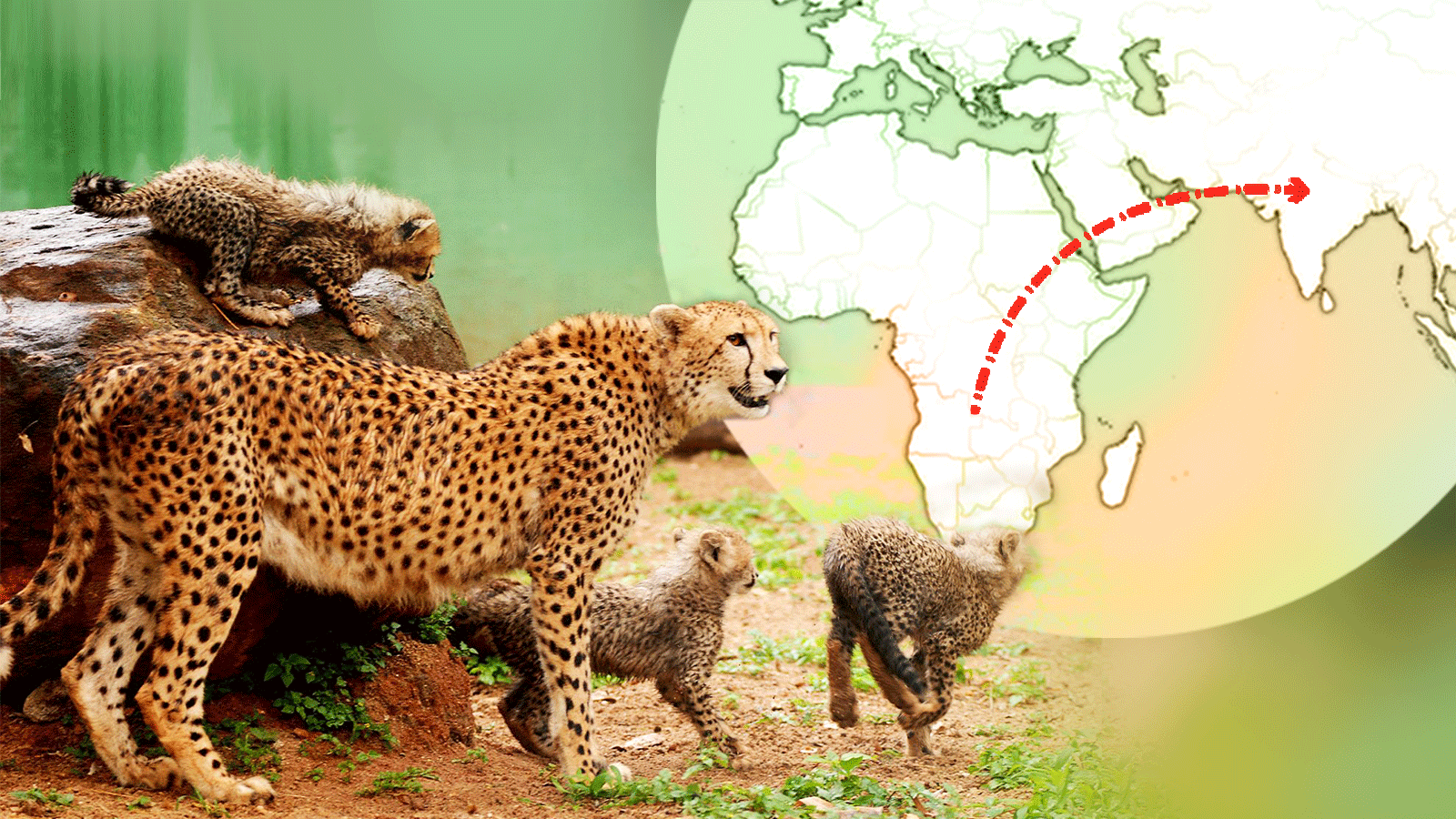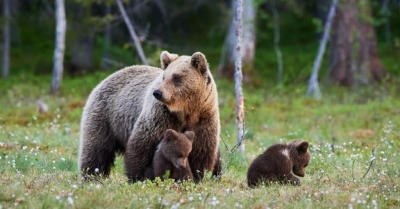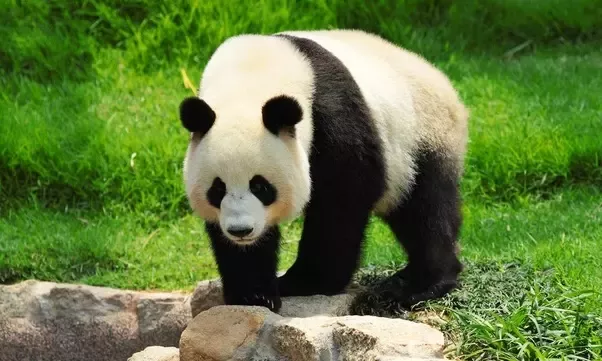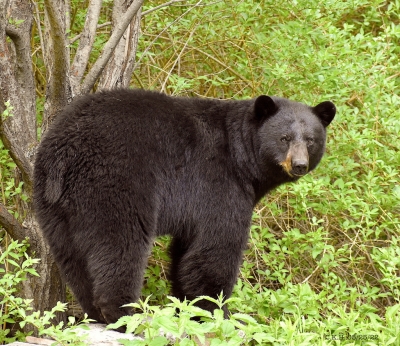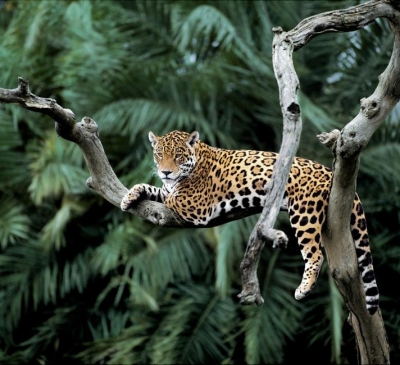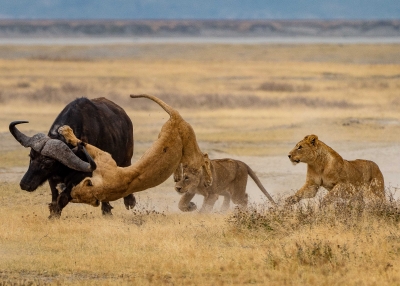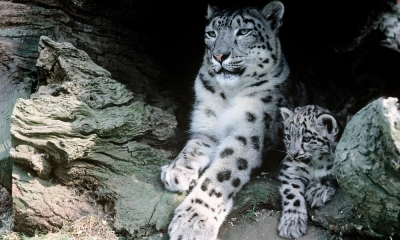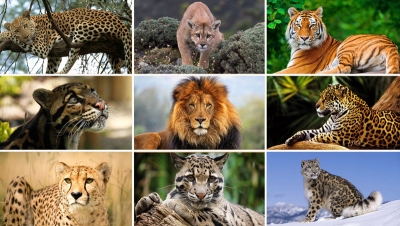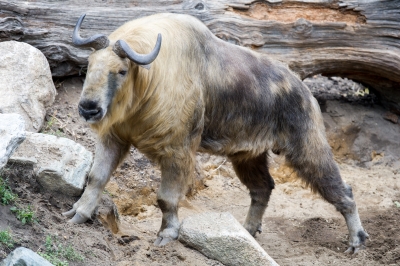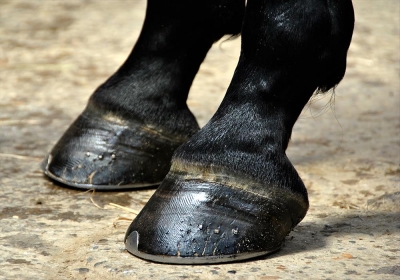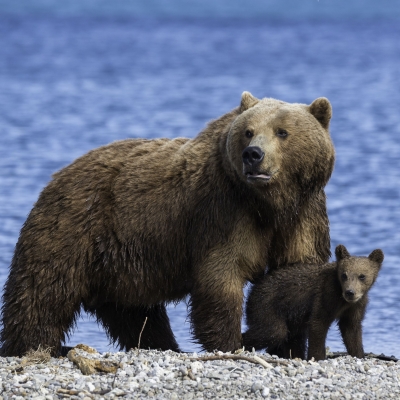
|
Brown bears! They are found in Europe, Asia and North America - where they are called grizzlies. Mostly solitary animals, brown bears are good hunters, able to run at speeds of up to 48 km per hour; they also swim well.
|
One way to identify a brown bear is by the hump at the top of its shoulder. The hump is made of muscle and helps the bear dig a den. No other extant species of bear has this hump. Adult bears have short tails and sharp teeth with curved lower canines. Their skulls are heavy and concave.
Brown bears claws are large, curved, and blunt. Their claws are straighter and longer than those of black bears. Unlike the black bear, which readily climbs trees, the brown bear climbs less frequently due to its weight and claw structure.
You might guess from their name that brown bears are brown. However, these bears can be brown, red, tan, cream, bicolored, or nearly black. Sometimes the tips of their fur are colored. Fur length varies according to the season. In the summer, their fur is shorter. In the winter, some brown bears' fur can reach 4 to 5 inches in length.
Brown bear size is highly variable, depending both on subspecies and food availability. Males are about 30% larger than females. An average-sized bear might range from 5 to 8 feet in length and weigh 700 pounds, however, much smaller and much larger specimens occur. On average, polar bears are larger than brown bears, but a large grizzly and a polar bear are comparable.
Habitat and Distribution
The brown bear's range includes northern North America and Eurasia, including the United States, Canada, Russia, China, Central Asia, Scandinavia, Romania, Caucasus, and Anatolia. At one time, it was also found throughout Europe, in northern Africa, and as far south as Mexico in North America.
Diet
Although brown bears have a reputation as fierce carnivores, they actually obtain as much as 90% of their calories from vegetation. Bears are omnivorous and naturally curious about eating nearly any creature. Their preferred food is anything abundant and easy to obtain, which varies according to the season. Their diet includes grass, berries, roots, carrion, meat, fish, insects, nuts, flowers, fungi, moss, and even pine cones.
Bears that live near people may prey on pets and livestock and scavenge for human food. Brown bears eat up to 90 pounds of food per day in autumn and weigh twice as much as when they emerge from their dens in the spring.
Adult brown bears face few predators. Depending where they live, they may be attacked by tigers or other bears. Brown bears dominate gray wolves, cougars, black bears, and even polar bears. Large herbivores rarely threaten the bears, but may fatally wound one in self-defense or protecting calves.
Behavior
Most adult brown bears are crepuscular, with peak activity in the early morning and evening. Young bears may be active during the day, while bears living near humans tend to be nocturnal.
Adult bears tend to be solitary, except for females with cubs or gatherings at fishing spots. While a bear may roam over a huge range, it tends not to be territorial.
Bears double their weight from the spring going into winter. Each bear selects a protected spot as a den for the winter months. Sometimes bears will dig out a den, but they will use a cave, hollow log, or tree roots. While brown bears become lethargic in the winter, they do not truly hibernate and can be easily woken if disturbed.
Reproduction and Offspring
Female bears become sexually mature between 4 and 8 years of age and come into heat once every three or four years. Males typically begin mating a year older than females, when they are large enough to compete with other males. Both males and females take multiple mates during the mating season, which runs from mid-May to June. Fertilized eggs remain in the female's uterus for six months, implanting in her uterus while she is dormant during the winter.
Cubs are born eight weeks after implantation, while the female is sleeping. The average litter is 1 to 3 cubs, although as many as 6 cubs may be born. Cubs nurse on their mother's milk until she emerges from her den in spring. They remain with her for about two and a half years. Males do not aid in rearing. They will engage in infanticide of another bear's cubs, presumably to bring females into heat. Females often successfully defend cubs from males, but may be killed in the conflict. In the wild, the average brown bear life expectancy is around 25 years.
Credit : Thoughtco.com
Picture Credit : Google
